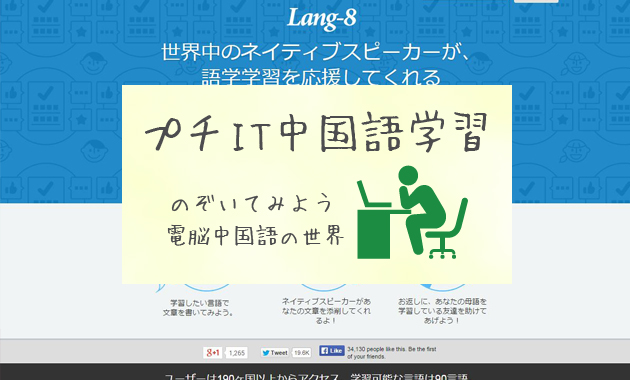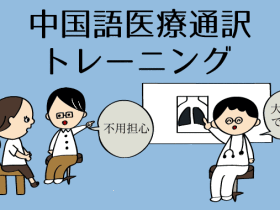Yubiquitous Text(無料)
中国語
音声データをYubiquitous Textにダウンロードする
全家福
你们好。我叫韩小虎。
这是我爸爸,他是山东人,高中的语文老师。
这是我妈妈,她是南方人,在机关工作。
不,她不是我妹妹,我没有妹妹。
现在很多中国家庭是一个孩子。
她是我的女朋友,叫李娟,我中学时的同学。
你们看,她长得漂亮吗?
你们好。我叫韩小虎。
这是我爸爸,他是山东人,高中的语文老师。
这是我妈妈,她是南方人,在机关工作。
不,她不是我妹妹,我没有妹妹。
现在很多中国家庭是一个孩子。
她是我的女朋友,叫李娟,我中学时的同学。
你们看,她长得漂亮吗?
出典:朝日出版社『新・中国語ブラッシュアップ』
(※著者・出版社より許諾をいただいての利用になりますので無断転載はご遠慮下さい)
日本語
音声データをYubiquitous Textにダウンロードする
新美南吉『たけのこ』
たけのこは はじめ じびたの したに いて、あっち こっちへ くぐって いく もので あります。
そして、あめが ふった あとなどに ぽこぽこと つちから あたまを だすので あります。
さて、この おはなしは、まだ その たけのこが じびたの なかに いた ときの ことです。
たけのこたちは とおくへ いきたがって しようが ないので、おかあさんの たけが、
「そんなに とおくへ いっちゃ いけないよ、やぶの そとに でると うまの あしに ふまれるから」
と しかって おりました。
しかし、いくら しかられても、ひとつの たけのこは どんどん とおくへ もぐって いくので ありました。
「おまえは なぜ おかあさんの いう ことを きかないの」
と おかあさんの たけが ききました。
「あっちの ほうで うつくしい やさしい こえが わたしを よぶからです」
と その たけのこは こたえました。
「わたしたちには なんにも きこえやしない」
と ほかの たけのこたちは いいました。
「けれど、わたしには きこえます。それは もう なんとも いわれぬ よい こえです」
と その たけのこは いいました。
そして どんどん はなれて いきました。
とうとう この たけのこは ほかの たけのこたちと わかれて、かきねの そとに あたまを だして しまいました。
すると そこへ よこぶえを もった ひとが ちかよって きて、
「おや、おまえは まいごの たけのこだね」
と いいました。
「いえいえ、わたしは、あなたの ふいて いらっしゃった、その ふえの こえが あんまり よかったので、こっちへ さそわれて きました」
と たけのこは こたえました。
さて、この たけのこは おおきく かたく なった とき、りっぱな よこぶえと なりました。
たけのこは はじめ じびたの したに いて、あっち こっちへ くぐって いく もので あります。
そして、あめが ふった あとなどに ぽこぽこと つちから あたまを だすので あります。
さて、この おはなしは、まだ その たけのこが じびたの なかに いた ときの ことです。
たけのこたちは とおくへ いきたがって しようが ないので、おかあさんの たけが、
「そんなに とおくへ いっちゃ いけないよ、やぶの そとに でると うまの あしに ふまれるから」
と しかって おりました。
しかし、いくら しかられても、ひとつの たけのこは どんどん とおくへ もぐって いくので ありました。
「おまえは なぜ おかあさんの いう ことを きかないの」
と おかあさんの たけが ききました。
「あっちの ほうで うつくしい やさしい こえが わたしを よぶからです」
と その たけのこは こたえました。
「わたしたちには なんにも きこえやしない」
と ほかの たけのこたちは いいました。
「けれど、わたしには きこえます。それは もう なんとも いわれぬ よい こえです」
と その たけのこは いいました。
そして どんどん はなれて いきました。
とうとう この たけのこは ほかの たけのこたちと わかれて、かきねの そとに あたまを だして しまいました。
すると そこへ よこぶえを もった ひとが ちかよって きて、
「おや、おまえは まいごの たけのこだね」
と いいました。
「いえいえ、わたしは、あなたの ふいて いらっしゃった、その ふえの こえが あんまり よかったので、こっちへ さそわれて きました」
と たけのこは こたえました。
さて、この たけのこは おおきく かたく なった とき、りっぱな よこぶえと なりました。
音声出典:青空朗読
出典:青空文庫 新美南吉『たけのこ』
(※音声データは許諾を得ての掲載となりますので無断転載はご遠慮下さい)
英語
音声データをYubiquitous Textにダウンロードする
Oklahoma Earthquake Surge Linked to Gas Wastewater Wells
Katie Keranen was at home in 2011 when the 5.6-magnitude earthquake, the biggest ever recorded in Oklahoma, struck.
“It shook my house pretty strongly. I was actually mildly scared,” Keranen said. “You could look up and see the top of the roof shaking.”
The earthquake certainly caught Keranen’s attention. Now a geophysics professor at Cornell University, she led a study to examine the huge expanding swarm of quakes in Oklahoma.
‘We wanted to figure out what the root cause was, what was actually causing the entire part of central Oklahoma to light up,” she said.
Keranen suspected that gas and oil wells had something to do with it. Oklahoma has some 4,400 underground disposal wells, where wastewater is injected back deep in the earth after drilling. Her team calculated how easily the fluid moved through the rocks and the rise in water pressure at 89 well sites.
“Once we had the earthquake locations and the fluid pressure increases in space and time, we were able to correlate those two together and figure out how much fluid pressure went up at each earthquake location from those wells,” she said. “And what we were able to find is that the fluid pressure at the earthquakes went up enough to trigger the earthquakes in basically each case.”
Four highly active wells accounted for most of the increased water pressure. Yet that rise was enough to trigger a front of seismic activity tens of kilometers away.
Keranen hopes the study results, reported in Science, can help the oil and gas industry decide how to better manage and treat wastewater to mitigate any impact.
“I think that industry can learn basically, what are the largest risks, what are the risk factors for wells for triggering earthquakes, and then design the wells to keep those sub-surface pressures lower to lower that risk of potentially triggering a quake,” she said.
Katie Keranen was at home in 2011 when the 5.6-magnitude earthquake, the biggest ever recorded in Oklahoma, struck.
“It shook my house pretty strongly. I was actually mildly scared,” Keranen said. “You could look up and see the top of the roof shaking.”
The earthquake certainly caught Keranen’s attention. Now a geophysics professor at Cornell University, she led a study to examine the huge expanding swarm of quakes in Oklahoma.
‘We wanted to figure out what the root cause was, what was actually causing the entire part of central Oklahoma to light up,” she said.
Keranen suspected that gas and oil wells had something to do with it. Oklahoma has some 4,400 underground disposal wells, where wastewater is injected back deep in the earth after drilling. Her team calculated how easily the fluid moved through the rocks and the rise in water pressure at 89 well sites.
“Once we had the earthquake locations and the fluid pressure increases in space and time, we were able to correlate those two together and figure out how much fluid pressure went up at each earthquake location from those wells,” she said. “And what we were able to find is that the fluid pressure at the earthquakes went up enough to trigger the earthquakes in basically each case.”
Four highly active wells accounted for most of the increased water pressure. Yet that rise was enough to trigger a front of seismic activity tens of kilometers away.
Keranen hopes the study results, reported in Science, can help the oil and gas industry decide how to better manage and treat wastewater to mitigate any impact.
“I think that industry can learn basically, what are the largest risks, what are the risk factors for wells for triggering earthquakes, and then design the wells to keep those sub-surface pressures lower to lower that risk of potentially triggering a quake,” she said.
出典:VOA – Voice of America English News
コメント
この記事へのトラックバックはありません。













































 【中国語会話】CS4...
【中国語会話】CS4...
この記事へのコメントはありません。